Turtles in Vermont – 7 Species That are Found Here
Vermont is home to 7 native species of turtles ranging from snapping turtles to painted turtles, spiny softshells, and the rare spotted and wood turtles.
Painted turtles and common snapping turtles are the most widespread of all the turtles inhabiting Vermont while the other species have been listed by Vermont’s Wildlife Division as of special concern.
The state is known for its harsh winter seasons which can make life a living hell for these cold-blooded animals.
However, the turtles can hibernate and enjoy the rewards of the muddy springs and warm and humid summers the state receives.
Find the full list of turtles of Vermont below and the basics you need to know about each of them, including physical appearance, habitat, and diet.
7 Types Of Turtles in Vermont
Contents
1. Common Snapping Turtle
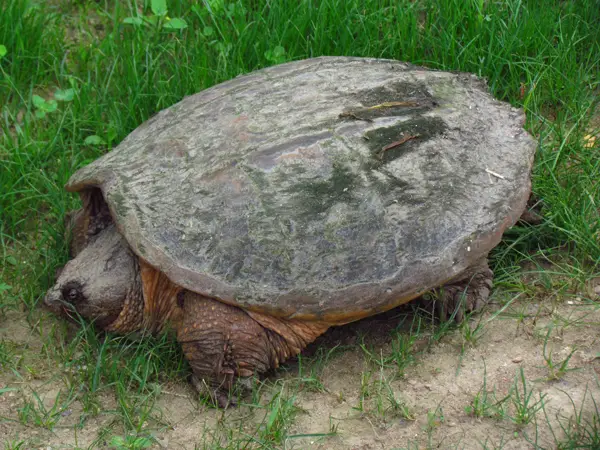
- Scientific name: Chelydra serpentina
- Common name: Snapping Turtle
- Family: Chelydridae
- Size: 8 to 18 1/2 inches
- Lifespan: 30 to 50 years or more
- Conservation status: Least Concern
The common snapping turtle is one of the most popular turtle species across the US states and is also found within the borders of Vermont. These snapping turtles in Vermont are unprotected and can be legally owned as pets.
An average common snapping adult turtle is pretty large and has a shell length of 18½ inches long. It is easily recognizable for this large size plus an intimidating appearance!
This species has a chunky head, a long tail, strong claws, and large webbed feet. The shell color is black or olive and has no distinct pattern. These Vermont snapping turtles are also known for their hook-like powerful jaws—they’re so strong that these turtles eat other turtles!
You’ll find them in waterbodies with muddy bottoms. Examples include marshes, ponds, lakes, rivers, and even shallow streams. They generally prefer waters with aquatic vegetation in plenty and foods such as fish, frogs, birds, etc.
These Vermont turtles generally show docile behavior but can get quite aggressive if taken out of water. The best way to calm it is to take it back to the waters, where it feels safe.
2. Eastern Spiny Softshell Turtle
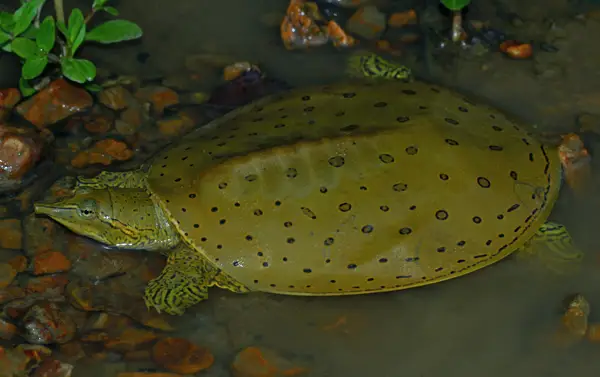
- Scientific name: Apalone spinifera
- Common name: Spiny Softshell Turtle
- Family: Trionychidae
- Size: 5 to 9 inches (males), 12 to 20 inches (females)
- Lifespan: 30 to 70 years
- Conservation status: Least Concern
The Eastern Spiny softshell turtle is a medium-to-large freshwater species that lives in the southwestern regions of Vermont.
To be more precise, Vermont is home to two subspecies of spiny softshell namely the eastern spiny softshell and the gulf coast spiny softshell.
This turtle prefers lakes, streams, and rivers with muddy or sandy bottoms and little or no vegetation.
Spiny softshells generally have leathery, pancake-like shells. Both turtle subspecies have shell colors ranging from tan to brown.
The gulf coast has a series of black bars that run around the rim of its shell and ring markings on the upper shell. And this distinguishes it from the eastern spiny shell.
Eastern Spiny softshell turtles of Vermont are mainly carnivorous and like eating anything they find in the waters including crayfish, insects, small fish, and so on.
They hunt by burying themselves in the mud or sand while keeping their head uncovered to grab food as it swims by.
3. Painted Turtle
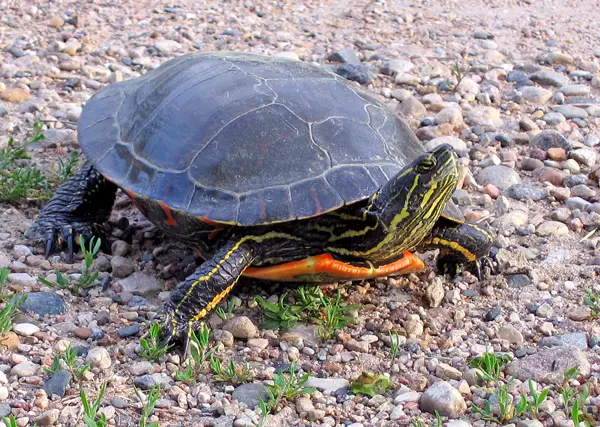
- Scientific name: Chrysemys picta
- Common name: Painted Turtle
- Family: Emydidae
- Size: 4 to 6 inches
- Lifespan: 30 to 50 years
- Conservation status: Least Concern
The painted turtle is one of the most recognizable turtle species in Vermont, thanks to its beautiful and unique coloring.
There are two subspecies in Vermont—the midland (Chrysemys picta marginata) and eastern (Chrysemys picta picta) painted turtles.
This painted turtle sub-species in Vermont has been observed to live near water bodies with minimal movements. Examples include marshes, ponds, slow-moving streams with sandy/muddy bottoms, small lakes, etc.
They also prefer areas with aquatic plants in plenty as they make their primary food source in the wild.
Painted turtles in Vermont are omnivorous and will eat small amphibians, mollusks, and insects.
One interesting fact about these Vermont turtles is their ability to hold their breath for up to 30 hours when inside temperate water. Moreover, they’re capable of standing dominant in freezing cold waters for up to 4 months.
4. Common Map Turtle
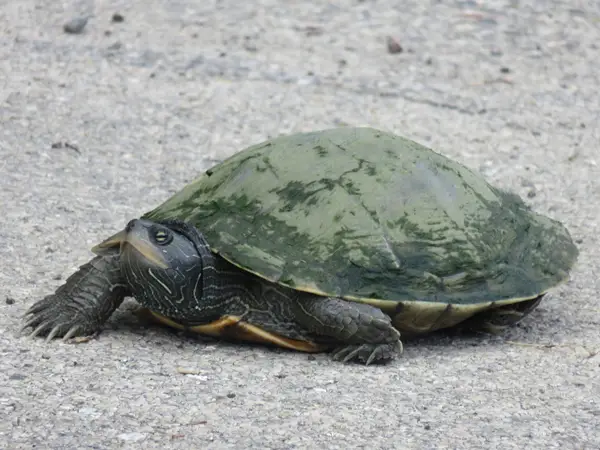
- Scientific name: Graptemys geographica
- Common name: Common Map Turtle, Northern Map Turtle
- Family: Emydidae
- Size: 3 to 10 inches
- Lifespan: 30 to 50 years
- Conservation status: Least Concern
The common map turtle is another species that inhabits Vermont. To be more specie, this freshwater turtle resides in the rivers and lakes of Vermont.
They prefer living in large waterbodies with debris. These offer the perfect spots for basking while the water bodies enable them to spend their hibernation periods in winter completely submerged.
Like other map turtles, this common map turtle gets its name from the map-like pattern on its shell. Its shell is typically darker and ranges from brown to black. The map pattern has a lighter coloration.
The common map turtle of Vermont is mainly carnivorous and feeds on mollusks such as clams and snails. It will also eat crayfish and insects. And when animal matter gets scarce, it will feed on plant matter.
Note that it may be difficult to spot a common map turtle in the wild in Vermont. Although active during the day, these turtles are quite timid and will quickly retreat to the waters at the slightest disturbance.
Also read: Turtles Of Arizona
5. Eastern Musk Turtle
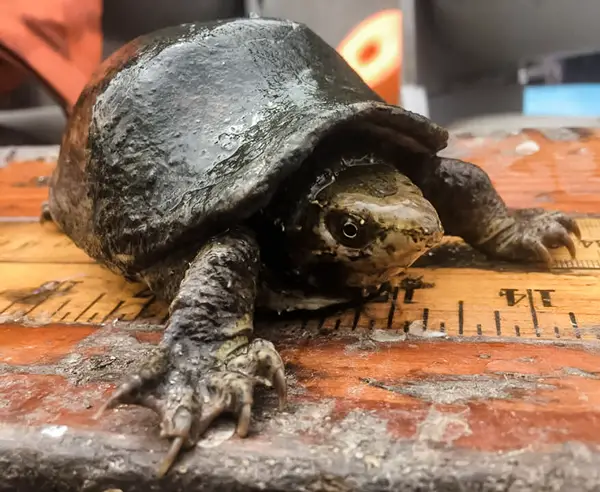
- Scientific name: Sternotherus odoratus
- Common name: Common Musk Turtle, Eastern Musk Turtle, Musk Turtle, Stinkpot
- Family: Kinosternidae
- Size: 2 to 4.5 inches
- Lifespan: 30 to 50 years
- Conservation status: Least Concern
The Eastern Musk Turtle is another aquatic turtle found in Vermont’s slow-moving and sluggish streams as well as still water bodies.
The turtle usually prefers areas with dark crevices, where it can easily hide. It also prefers lots of plant matter to burrow in and hide.
An average adult eastern musk turtle is quite small (2 to 4.5 inches long). It has a pretty plain appearance with highly consistent colors. Both the shell and skin usually share the same color and can range from dark brown to black.
The turtle shell has one unique feature—a ridge traversing its entire shell length. Besides, it has another distinctive feature: two light-colored stripes on its head.
Common musk turtles of Vermont are herbivorous and will eat small aquatic or semi-aquatic animals, carrion, and aquatic vegetation. They will also feed on any other vegetation on land.
When it feels threatened, this musk turtle species emits a foul odor (a musky odor, hence its name). This scent can be detected in water or on land. It can also easily waft through the air to its predators.
Also, these Vermont turtles are good at climbing trees! This great capability enables them to go high up tree branches to find a safe resting place and avoid predators.
6. Spotted Turtle
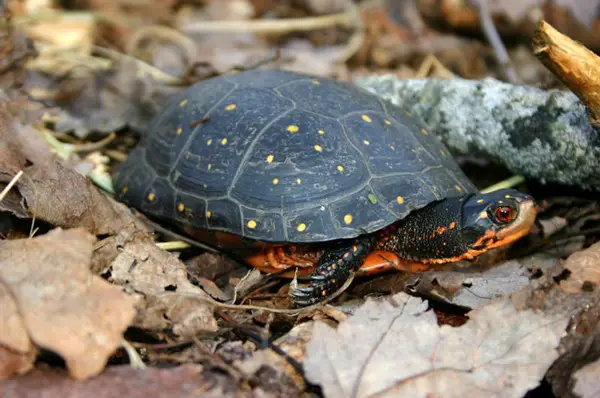
- Scientific name: Clemmys guttata
- Common name: Spotted Turtle
- Family: Emydidae
- Size: 4 to 5 inches
- Lifespan: 25 to 50 years
- Conservation status: Endangered
Spotted turtles in Vermont reside in shallow marshes, swamps, and bogs. They’re semi-aquatic and are comfortable on the land just as they are in the waters.
An adult spotted turtle has a smooth upper shell that ranges from olive to dark brown in color, with some light yellow spots. The neck and head feature irregular orange or yellow spots and streaks. Also, their tails are fairly long.
The turtles are omnivorous and their diet involves crustaceans, mollusks, insects, and plant matter (occasionally). Note that these turtles are aggressive hunters and will actively seek their prey.
Unfortunately, the population of spotted turtles in Vermont is on the decline due to human interference and habitat loss. Their unique shell patterns make them a favorite species of a pet turtle for many people.
For this reason, they’re listed as endangered and protected by many governing bodies. In Vermont state, you can only own ONE spotted turtle and not more than that!
Above all, the spotted turtles of Vermont are incredibly smart. Studies carried on them using a maze indicate they have the same brain capacity as the mouse!
7. Wood Turtle
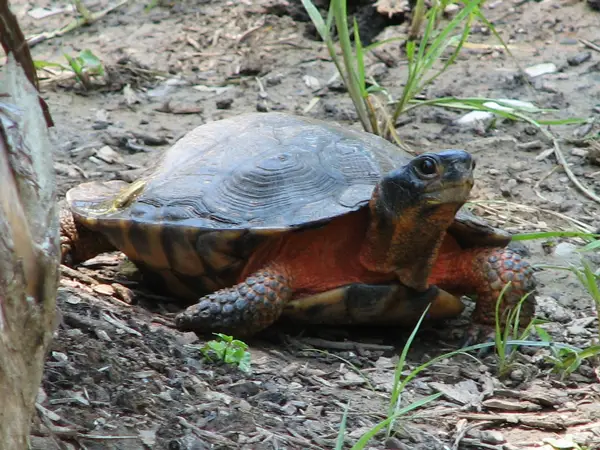
- Scientific name: Glyptemys insculpta
- Common name: Wood turtle, Sculptured Tortoise, Redleg, Red-legged Tortoise
- Family: Emydidae
- Size: 5.5 to 8 inches
- Lifespan: 40 to 60 years
- Conservation status: Endangered
Wood turtle species also inhabit the various woodland habitats across Vermont state. However, they also tend to stay near the water and will frequently venture into it.
During winter, they tend to hibernate at the bottom of deep rivers and pools.
The turtles get their name from their sculpted-like looks. Their upper shells are dark brown and have sport patterns resembling wood grain and growth rings.
Their scutes may sometimes appear like they’re pyramiding, further enhancing their sculpted shape.
Wood turtles of Vermont are diurnal omnivores and their diet mainly consists of berries, plants, insects, and mollusks.
They forage for their food widely and have even been observed stomping their feet on the ground as a way of tricking the earthworms into surfacing.
Related: Turtles in Kansas
Conclusion
Now you know the native species of Vermont and their basic information, including habitat, lifespan, size, diet, physical appearance, and conservation status.
The turtles inhabiting this state are all aquatic and include common snapping turtles, painted turtles, spiny softshells, common map turtles, eastern musk turtles, and spotted and wooden turtles.
Only two of these species, the painted turtles and common snapping turtles, are thriving well in the state and are unprotected.
As for the other 5 species, they’re under special protection as their population is on the downward curve.
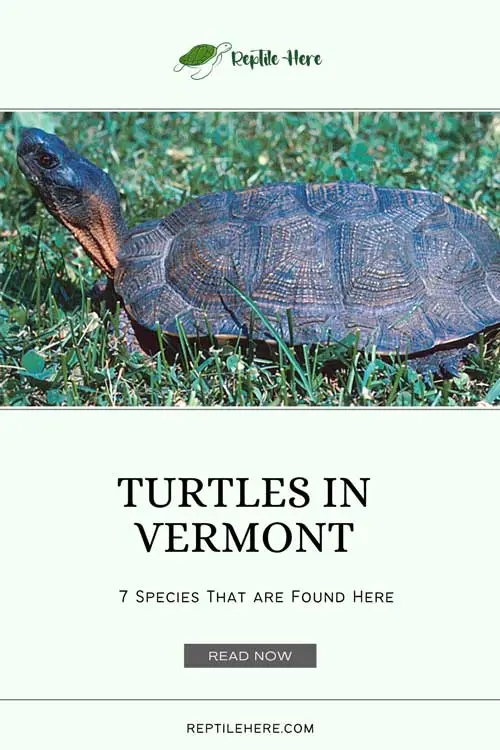

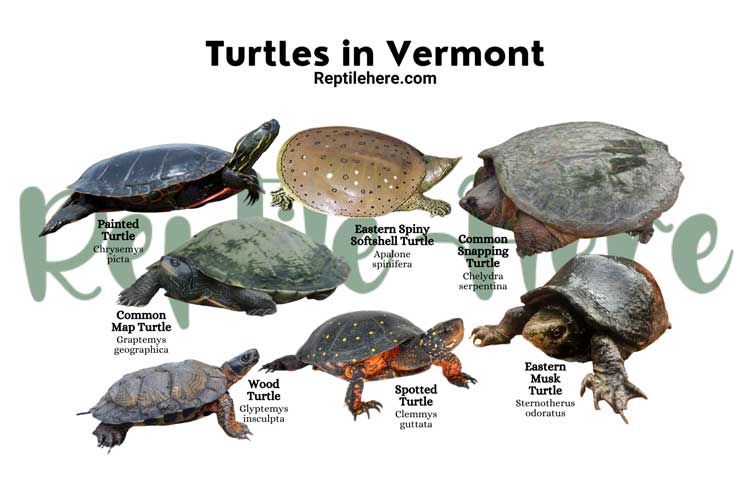
Great write-up and photos! Thanks so much! I saved the lives of two turtles during the 7 years I lived in Vermont. Both were trying to cross a major roadway. One was trying to bite me the whole time that I was trying to save it — I think that was a common snapping turtle. I think the other turtle was a Wood Turtle.